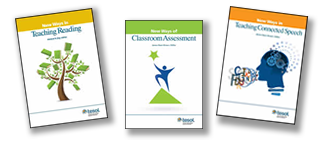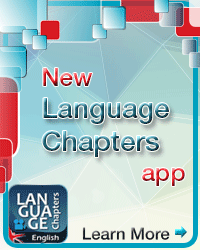Free Book Chapter From "Language Teaching Insights From Other Fields: Sports, Arts, Design, and More"
Edited by Christopher Stillwell
Chapter 11
How Would a Basketball Coach Get a Team to Talk the Talk?
by Sylvia Whitman
If you’ve ever played basketball, you’ve probably heard the coach’s lament from the sidelines: “Talk to each other, guys!”
How might you carry that challenge into a TESOL classroom? By teaching students some conversation plays, of course.
With a court-centered lesson, you’re likely to engage the sports fans in class. Appealing to varied learning styles, you can draw the plays or stage them so that people get up and move around. And whatever the vocabulary or language form you want students to master, along the way they’re likely to pick up a few basketball terms handy for social conversations. Talk about the shot clock when you set time limits, award extra credit for free throws, or tell the class you want everyone to speak, not just the ball hogs. (For definitions of bold terms, see the glossary in this chapter’s Appendix.) With a basketball theme, you can also draw in all sorts of film clips, from the cotton-candy song-and-dance numbers of High School Musical to the true-to-life civil rights struggles in Remember the Titans.
I belong to the Title IX generation of female athletes. Passed in 1972, Title IX required any educational institution receiving federal funds to offer equal opportunities to men and women—in sports as well as academics (The Margaret Fund of the National Women’s Law Center, 2013). Long excluded, girls and young women began to get in the game at many levels. In the late 1970s, I played basketball on a middle school team dubbed the “Knickettes” in honor of the nearby New York City franchise, the Knicks. Although I switched to squash in high school and college, my son’s and daughter’s love of basketball has brought me back onto the court with a group of senior women athletes interested in serious play. They outshoot, outpass, and outdribble me, but they welcome all comers.
Coaches run practices every day; the good ones can teach instructors a thing or two about how to structure a lesson (Pennington, 2009). “Always be prepared,” says basketball coach Tim Sayles (2013), who suggests scaffolding drills so that players’ skills advance in small increments from where they are to where you want them to be. His advice: “Keep them moving. . . . Make everything competitive. . . . Don’t do any one thing too long.”
Outstanding coaches build confidence as well as skill. Drilling mind and body, they use pace and challenge to improve motivation, essential for success. The winningest coach in Division I college basketball, Mike Krzyzewski, of Duke University and the U.S. Olympic team, has inspired generations of players with a sense that he cares about them as people as well as athletes. “Coach K only knows one way to go about his business, and that’s with passion and with energy and with discipline,” Houston Rockets forward Shane Battier told a reporter. “But at the same time, you always have a good time. . . . . He gets people to play hard and play together” (DuPree, 2006). Like great coaches, great teachers empower students as lifelong learners.
A Basketball Coach’s Tips for Language Teachers
Communication is key in basketball, but it’s usually short and fast. These lesson tips focus on speed, deft handoffs, and practice, practice, practice.
Need another voice to reiterate that message? Check out Johnson’s (n.d.) 1-minute video on basketball fundamentals.
Tip 1: Emphasize the physical, as well as verbal, components of communication.
Good basketball and good conversation start with body language and spatial awareness. In a game, players communicate through eye contact, gestures, and positioning on the court. You might show videos of fast breaks and point out wordless “talk.” For instance, in this clip from a 2010 National Basketball Association (NBA) game, Miami Heat teammates Eddie House and LeBron James keep their eyes both on the ball and on each other: http://www.youtube.com/watch?v=7dmJoqqqSDk. In this clip, without a word, several Brooklyn Nets combine choreography and conversation: http://www.youtube.com/watch?v=E_FNaDu1z8A. How do these players use their faces and their arms to signal their readiness to receive the ball?
Drill: Over the Top
- In small groups students brainstorm body language “rules” that can improve conversation. dxpham (2008) lists 18, including nod, smile, and lean in. Students may come up with many other suggestions. They may also compare different cultural norms for conversation.
- Scribes from each group take turns writing their rules on the board. For a laugh, you can violate or overdo each action as students report it. For instance, to illustrate the elasticity of personal space for different types of conversations, you might stand in the doorway and shout, “I love you” to someone in the far corner of the room, or stand nose to nose with a student and whisper, “I want to discuss this contract.”
- Divide the class into groups of three, and assign one student as observer. Give the conversation pairs a simple topic (e.g., tell us about your name), and challenge them to practice either good or inappropriate body language—slightly exaggerated for the sake of the observer. After a minute, the observer reports. Students then switch roles.
Drill: Triple Threat...
TESOL Blogs Interested in writing a blog for TESOL?
Contact Tomiko Breland with your idea or for details.
Check out the latest TESOL Blogs:
|
Teaching and Learning Online: Part Two: Putting the Pedagogy First, by Andy Curtis
 After posting the first blog in this series on August 14, I received an e-mail asking about the name of this blog: Teaching and Learning Online (TLO). As we are all language teachers, in one way or another, the reader asked why the name was not, for example, Online Learning and Teaching. That was a very good question, so I thought it would be useful to explain my belief that “online” should “come at the end.” After posting the first blog in this series on August 14, I received an e-mail asking about the name of this blog: Teaching and Learning Online (TLO). As we are all language teachers, in one way or another, the reader asked why the name was not, for example, Online Learning and Teaching. That was a very good question, so I thought it would be useful to explain my belief that “online” should “come at the end.”
As a TESOL professional of color, I first heard the phrase “people of color” shortly after Martin Luther King Jr referred to “citizens of color” in 1963. And although the phrase can still spark a lively debate even today, the phrase “forefronted” being people and citizens first, and being “colored” second. Read More. |
|
The Rhetorical Situation: An Interactive Classroom Activity, by Elena Shvidko
 The concept of rhetorical situation is not easy to grasp for even the most advanced ESL writers. Even when they seem to understand it conceptually, they still may have a hard time applying it to their own writing. The interactive classroom activity that I include in today’s entry provides examples and application of purpose, audience, genre, stance, and media, and it can also serve as a great review of material that you addressed in class about the topic. Read More. The concept of rhetorical situation is not easy to grasp for even the most advanced ESL writers. Even when they seem to understand it conceptually, they still may have a hard time applying it to their own writing. The interactive classroom activity that I include in today’s entry provides examples and application of purpose, audience, genre, stance, and media, and it can also serve as a great review of material that you addressed in class about the topic. Read More.
|
|
Organization Tools for Every Teacher, by Tara Arntsen
 While I was teaching internationally, none of my schools ever had their own software to help teachers with their record keeping (for things like grades and attendance), but there are a number of free sites that help teachers do just that. From what I’ve found, it seems like Engrade, Edmodo, and Schoology are three of the best/most popular. Read More. While I was teaching internationally, none of my schools ever had their own software to help teachers with their record keeping (for things like grades and attendance), but there are a number of free sites that help teachers do just that. From what I’ve found, it seems like Engrade, Edmodo, and Schoology are three of the best/most popular. Read More.
|
|
TESOL Symposium and Annual CAMELTA Congress: An Overview, by Christine Coombe
 As part of my summer vacation, I had the great pleasure of serving as a plenary speaker at the TESOL Symposium on K–12 Teacher Development and Training on August 12, 2012 and the 12th Annual CAMELTA Congress on August 13–14, 2013. This 1-day event planned jointly with TESOL International Association and CAMELTA (Cameroon English Language and Literature Teachers Association) and held at the Catholic University of Central Africa, Ekounou Campus in Yaounde, Cameroon, provided a unique opportunity for teachers, teacher trainers and administrators in Cameroon, Africa, and EFL contexts worldwide to explore effective policies and practices in K–12 teacher development. Read More. As part of my summer vacation, I had the great pleasure of serving as a plenary speaker at the TESOL Symposium on K–12 Teacher Development and Training on August 12, 2012 and the 12th Annual CAMELTA Congress on August 13–14, 2013. This 1-day event planned jointly with TESOL International Association and CAMELTA (Cameroon English Language and Literature Teachers Association) and held at the Catholic University of Central Africa, Ekounou Campus in Yaounde, Cameroon, provided a unique opportunity for teachers, teacher trainers and administrators in Cameroon, Africa, and EFL contexts worldwide to explore effective policies and practices in K–12 teacher development. Read More.
|
TESOL Bookstore

Looking for classroom ideas for Monday morning?

These popular books in the New Ways series are now updated and revised, featuring
-
New activities inspired by state-of-the art developments in teaching English learners
-
Expanded resources needed for today’s classroom
-
More of what made the first editions become best sellers: classroom-ready activities contributed by ESL and EFL reading teachers for ESL and EFL reading teachers
New Ways in Teaching Reading, revised
Richard R. Day, Editor
New Ways of Classroom Assessment, revised
James Dean Brown, Editor
New Ways of Teaching Connected Speech
James Dean Brown, Editor
Browse the entire New Ways series
Look for more New Ways revisions coming in late 2013:
New Ways in Teaching Writing, revised
Denise Mussman, Editor
New Ways in Teaching Business English
Evan Frendo and Clarice Chan, Editors
|
| ADVERTISEMENT |

|
 |
 |
|
|
 |
The 2014 Annual
TESOL Convention
& English Language Expo
is now open for registration!
Portland, Oregon, USA
Check out the
Convention Website |
 |
|
 |
|